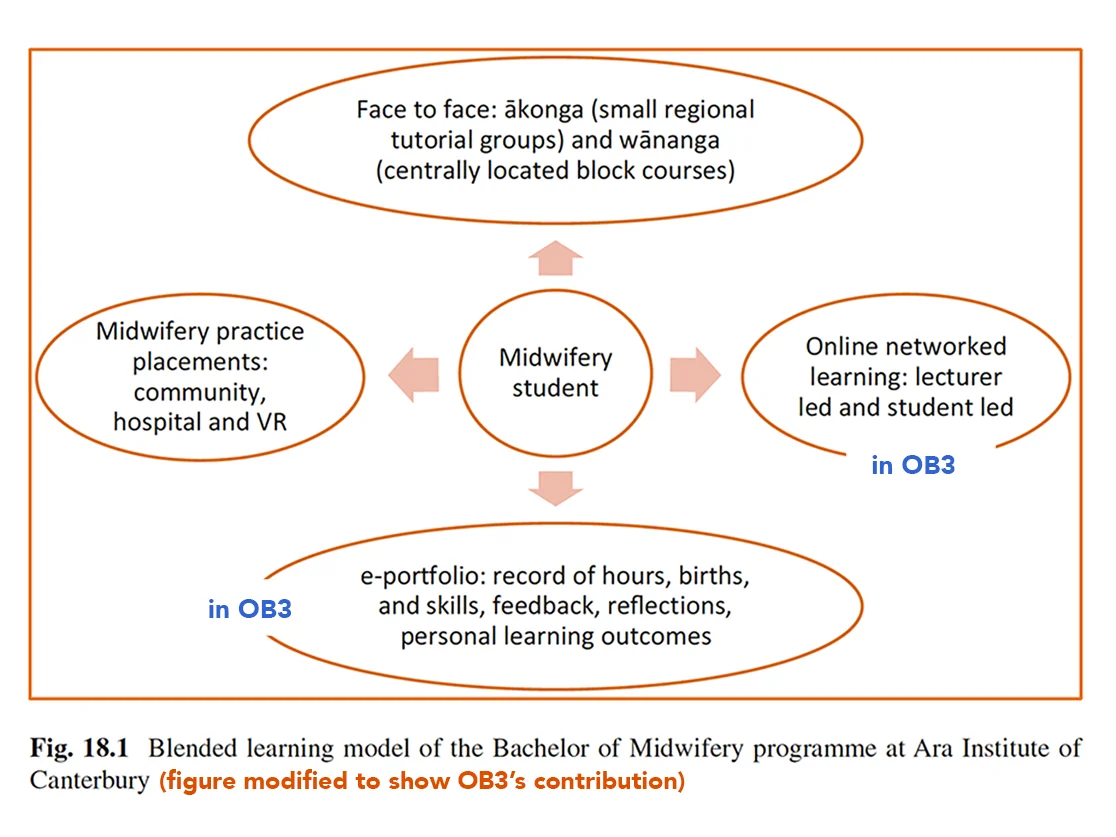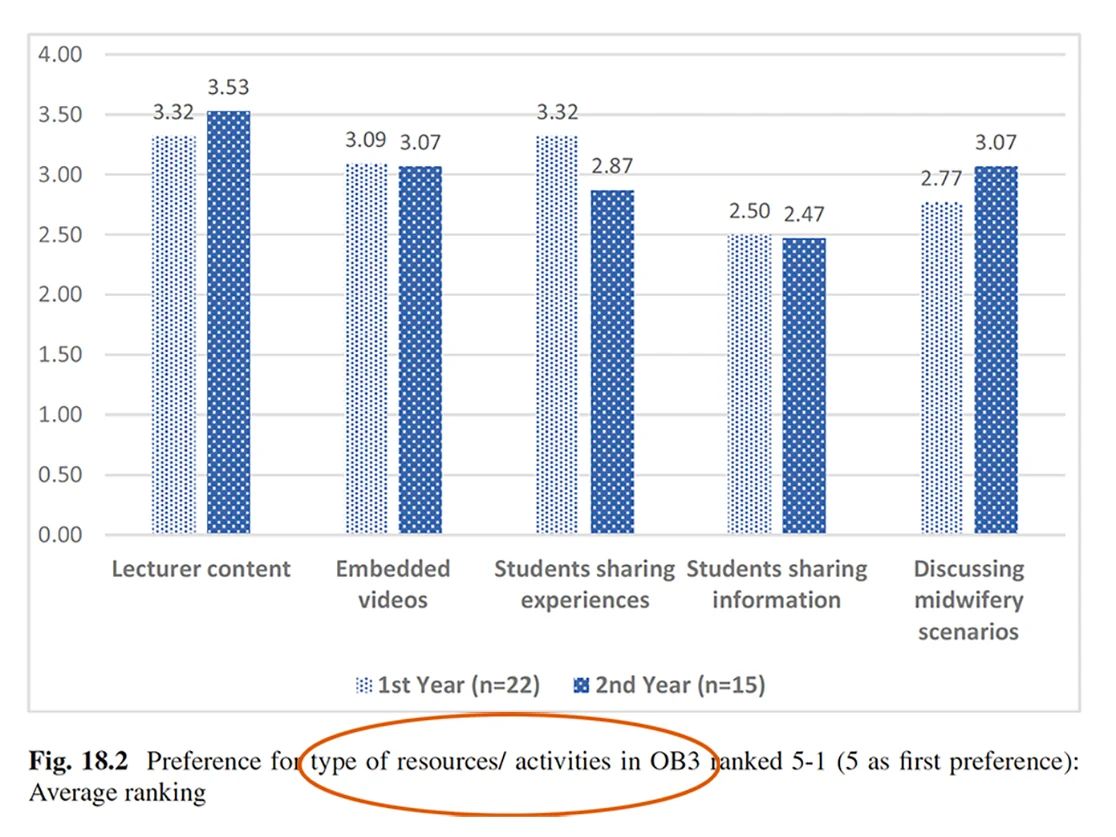Using OB3 to facilitate networked learning with theoretical content
A decade ago, we claimed “existing online systems for fostering collaboration are limited in the sense of enabling a distributed community of practice to engage and exchange to learn together. We created [the OB3] app in which conversations happen around content, not separate from it. Online discussions in context are needed for facilitating [the] establish[ment of] connections among concepts as well as relevance” (Gomez & Tamblyn 2012). In 2022, Ara Midwifery published on how OB3 supports their network distributed model for meaningful connection with distance education students.
The bachelor of Midwifery at Ara Institute of Canterbury has been using OB3 since 2013 (Daellenbach, Davies, Kensington, & Tamblyn, 2014). A recent book chapter (Daellenbach et al., 2022) describes their networked distributed model for teaching and learning (see figure below). OB3 is used to network learners with other learners, with lecturers and experts, in activities around theoretical content. The approach has helped ensure students can access distance education from provincial and rural areas.

